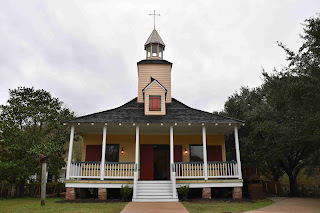After a
lateish breakfast we went for a walk to the famous Beale St – it used to be an
area for “coloured people only”, where they ate, shopped, and made music. These
days it is a strip full of neon signs, bars, eateries and touristy souvenir
shops. We bypassed them and went first to the Rock and Soul Museum. The museum
is very well done, describing the evolution of rock, soul, hillbilly and
rockabilly music, from the days of cotton picking, through to Elvis. Back in
the 50s, Memphis had a black radio station and also a radio station staffed by
women only – WHER. The audio tour included lots of music from the times – it was
a lot of fun.
Following
that, we went to the Gibson Guitar factory and did a tour. It was really
interesting seeing how guitars are made and assembled. A Gibson guitar takes
about 3-4 weeks to make and the factory makes around 60 per day.
We headed
back to the hotel, and despite the bitter cold, we took a carriage tour. The
carriage was all decked out in fairy lights and we had several thick blankets
tucked around us, and hot chocolate in take away cups –so we were set. We drove
around downtown Memphis, looking at the historical sights. We saw the sunset
over the river and finished with a clop down Beale st, before being dropped
back at the hotel.
We decided
it was too cold to go looking for food, so we had a quick dinner in the hotel
steak house – Ribs and meatballs. Then a cocktail in the piano bar before
heading to bed.
Tomorrow we
are homeward bound – about 21 hours of actual air travel over 30 or so hours.
See you on the other side!


















































